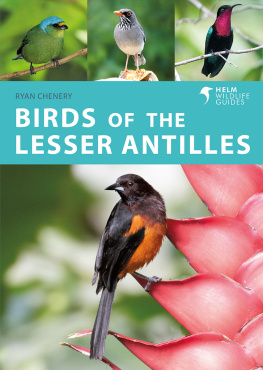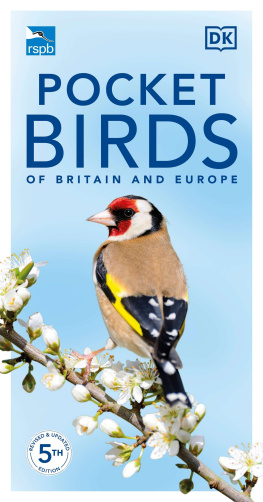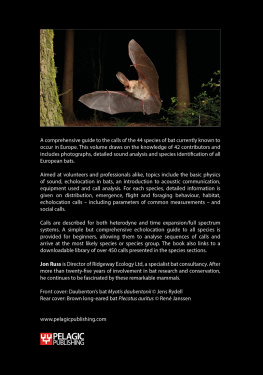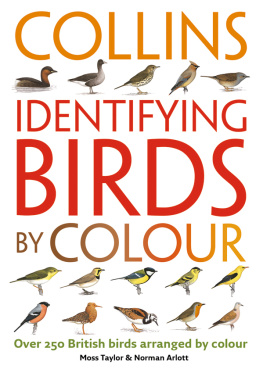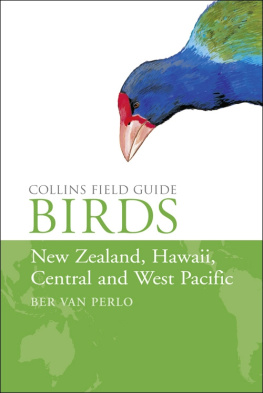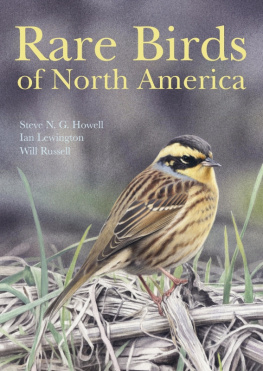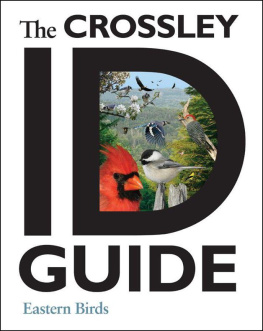The
Warbler Guide
Tom Stephenson and Scott Whittle
Drawings by Catherine Hamilton
Copyright 2013 by Tom Stephenson and Scott Whittle
Requests for permission to reproduce material from this work
should be sent to Permissions, Princeton University Press
Published by Princeton University Press, 41 William Street,
Princeton, New Jersey 08540
In the United Kingdom: Princeton University Press,
6 Oxford Street, Woodstock, Oxfordshire OX20 1TW
press.princeton.edu
Cover photograph Northern Parula Robert Royse
All Rights Reserved
ISBN (pbk.) 978-0-691-15482-4
Library of Congress Control Number: 2012950887
British Library Cataloging-in-Publication Data is available
This book has been composed in Sabon LT Std and Gill Sans
Printed on acid-free paper.
Printed in Thailand
10 9 8 7 6 5 4 3 2 1
CONTENTS
The
Warbler Guide
HOW TO USE THIS BOOK
Principal Sections of the Book
This book is designed to help you quickly and confidently identify the species and, when possible, the age and sex of any warbler you encounter in the United States and Canada. In light of this goal we have included the following sections:
Visual Finders are designed to help you quickly identify any warbler you see. These pages present the typical views you will encounter in the field: face, side, 45-degree, and underside. Each Visual Finder is organized by similar-looking plumages and some show just eastern or western birds. Since we include all similar species with each species account, it is usually necessary only to find an image close to the bird in question and then go right to that species Species Account. Even if the initial choice turns out to be incorrect, the Comparison Species section of the Species Accounts should narrow the ID down to the correct warbler. Use the visual finders not only to identify unknown species but also to test and review your warbler identification skills.
Song and Call Finders help identify a vocalizing warbler and include songs, chip calls, and flight calls. The vocalizations are organized by similar-sounding species. Songs are further grouped using a simple and very effective tree system designed to narrow down the choices to one or a few species in the shortest number of steps. There is more information on how to use this section in How to Listen to Warbler Songs.
Topographic Tour and What to Notice on a Warbler provide guides to the key feather groups and features that are important for warbler identification. Some of the topics, such as feather contrast and understanding the undertail, are often overlooked by birders but are very valuable ID tools.
The Species Accounts include images of each species from three angles along with additional photos and notes on all similar species. This presentation should lead to the correct species even if the initial ID choice is incorrect. These pages also provide other important information including spring and fall migration paths, subspecies ranges, behavior and color impression icons, and other key ID points.
Aging and Sexing Sections in the Species Accounts help establish a birds age and sex when possible. These sections are separate to avoid confusing the ID points for aging and sexing with the ID points needed for species identification.
Vocalization Information in the Species Accounts includes sonograms and direct comparisons with similar-sounding species. The ID points are based on a new, objective system for analyzing bird vocalizations that uses simple, easy-to-hear criteria, including a songs structure, quality, and other characteristics, and avoid traditional, often clumsy, transliterations. To take full advantage of this system, be sure to read How to Listen to Warbler Songs and Understanding Sonograms.
Quizzes offer a number of real-world ID problems to solve. Active testing greatly aids retention, so use this section to explore and reinforce your warbler ID knowledge.
Glossary. We have tried to keep all terminology as clear and jargon-free as possible. Of course technical terms are often needed for both precision and economy, and we have employed some of these as necessary. To save space, we have also had to use a few abbreviations, such as UnTC for undertail coverts. Be sure to check the glossary for any terms you find unfamiliar. You can also use this section as a reference for the Song Analysis terminology and for abbreviations for the Aging and Sexing sections. The Topographic Tour is also a good resource if you are unclear about any of the terms used for feather groups or bare parts.
Other sections include Similar Non-Warbler Species, North American Warbler Taxonomy, and Flight Shots.
Alphabetical Order for the Species Accounts
To make each species fast to find, we have decided to put the Species Accounts in alphabetical order. This is a departure from the taxonomic organization of many prior field guides and deserves a note.
As shown in the North American Warbler Taxonomy section, the taxonomy of warblers has changed significantly in the last few years, and some species, such as Yellow-breasted Chat, are still not settled. If we were to follow current taxonomic order, we would necessarily change the prior, more familiar sequence, which would make some species more difficult to find in this book.
Also, the traditional order is actually treated very differently in many popular field guides. Species such as Cerulean, Northern Parula, and Palm Warblers are found in different locations in these books. In many previous field guides, genera were placed together so that similar-looking species could be more easily compared. The Warbler Guide accomplishes this by placing all similar species, including those in the same (or possibly now, new) genera, together in the Species Accounts for each relevant species.
For these reasons, we feel that placing North American warblers in alphabetical order will make all species much faster to find without sacrificing any comparative benefits.
Online Resources
At www.press.princeton.edu/titles/9986.html, we have included additional supporting materials such as quizzes, a chart of comparative song statistics, some guidelines for beginning birders, and other information.
ICONS AND KEY TERMS
To reduce the amount of text and to make the book faster to use in the field, in the Species Accounts we use various icons and codes, which are defined below.

| Diagnostic Field Mark indicates that this field mark alone is always sufficient for a confident ID. |
Shape and Color Icons It is often possible to identify or greatly narrow down an ID using just the shape and color of a bird. These can be important marks especially when a bird is seen very briefly or for picking out the rarer species in a large flock. For each species we have included shape and color icons to help sensitize your eye to these important warbler characteristics.




